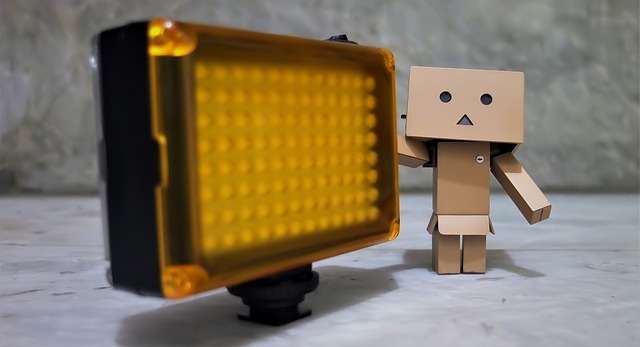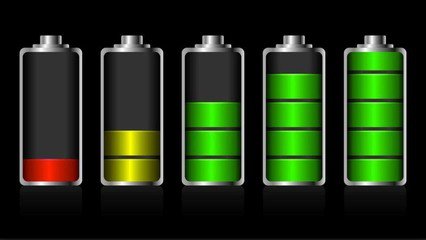Lithium-Ion Battery Chemistry Analysis
Jun 05, 2019 Pageview:1306
Lithium-ion batteries are the new best friend of various equipment and technology. Whether it be hybrid cars, phones or laptops, most of them are powered by lithium-ion batteries. One of the thing that stands out in these cells is their energy density. The energy density of an average lithium-ion battery is twice that of a NiCad battery. This means a lighter and smaller lithium battery can deliver the same power as a sizeable NiCad battery. Hence, they are better for portable electronics.
Chemical materials for lithium-ion battery formation
Lithium-ion is the central chemical material used in the formation of the battery. Both the electrodes are made of a material that can easily absorb the lithium ions through a process known as intercalation. In this process, charged lithium ions are held on the electrodes, thereby producing energy. In the lithium-ion battery formation process, the ions are linked with electrons and tied to the anode. When discharging of the battery occurs, these lithium ions are released from the anode and are absorbed by the cathode after travelling through an electrolyte.
When a lithium-ion battery is charged, an oxidation process occurs at the cathode. Here, the cathode loses its electrons. To maintain the balance of charge between the two electrodes, the cathode dissolves the same number of positive ions into the electrolyte as well. These positive ions travel to the anode, get linked within its structure and integrate with the lithium ion.
When the battery discharges, the lithium ion is de-linked from the anode material. It migrates to the cathode through the electrolyte. This migration again releases electrons which go through a wide, thereby providing electric current.
The chemical material used for the electrolyte is a solution containing solvents like diethyl carbonate or dimethyl carbonate. Lithium salts are added into the mixture as well. This electrolyte plays a role in maintaining and improving the performance of the battery. Since the electrolyte has lithium salts, it means that it contains lithium ions. Therefore, lithium ions merely have to dissolve in the solution rather than make the entire journey from cathode to anode and vice versa.
The material used for the anode is graphite. Since the element gets damaged with repeated insertion and discharge of lithium ions, researchers are trying to gauge the viability of using options like grapheme. On the other hand, the chemical material for the cathode is a combination of metal, oxygen and lithium.
Different chemical element association for different lithium-ion battery application
A lithium-ion battery is an umbrella term. There are various types of lithium-ion batteries available. The difference lies in the chemical elements that make the cell. The varying chemical element association further makes the battery used for a variety of applications. Here are some of the popular chemical element associations.
Lithium Cobalt Oxide (LiCoO2)
This chemical association is best used to create batteries to charge phones, cameras and laptops. Here, the anode is made of a graphite carbon while the cathode is made from cobalt oxide. The shortcoming of this battery is its low life span and thermal stability.
Lithium Manganese Oxide (LiMn2O4)
The use of lithium Manganese Oxide as a battery was first commercialized in 1996. Here, lithium manganese oxide is used as a cathode. Its three-dimensional spinel formation helps boost the flow of ions to the electrode. This helps in reducing internal resistance and increasing the amount of current that flows through the system. Compared to other lithium-ion batteries, this chemical element association features higher thermal stability. However, life is also limited.
Lithium Nickel Manganese Cobalt Oxide (LiNiMnCoO2)
The most popular and successful chemical element association is the Lithium Nickel Manganese Cobalt Oxide combination. The cathode features an NMC combination (nickel-manganese-cobalt). These batteries feature a high energy density and hence can help function as power or energy cells. This combination is best used to power e-bikes, power trains and tools. The cathode uses 1/3rd manganese, nickel and cobalt respectively.
Lithium Iron Phosphate (LiFePO4)
Back in 1996, researchers found out that phosphate too can be used as a cathode for lithium-ion batteries. This combination delivers low resistance and better performance. It also features a long cycle life, better tolerance and high thermal stability.
Lithium-ion battery chemistry technology 2019
One of the recent technology researchers are working towards for the lithium-ion battery chemistry is solid state electrolytes and electrodes. Currently, all lithium-ion technologies make use of liquid electrolytes. This causes a lot of resistance. Moreover, it also means that expensive membranes are required to keep the anode and cathode apart. Not to mention that the impermeable casing used to prevent leakage isn’t cheap either. This has severely hampered the design and size freedom of lithium-ion batteries so far.
The gradual move towards solid-state electrolytes has the power to solve such issues. This will especially benefit wearables, electric cars and the drone market. In 2011, Tokyo Institute of Technology and Toyota discovered a sulphide-base solid electrolyte which features the same conductivity as a liquid electrolyte. By 2016, they were able to double the conductivity. This has led to increased interest in a solid-state electrolyte in an effort to further improve lithium-ion battery performance.
In solid-state batteries, all the chemical elements, whether it be the electrolytes or the electrodes, will be of solid-state. The electrolyte due to its formation will function as a separator, eliminating the need for a casing and a membrane. Hence, the battery will be flexible, thinner and of high energy density. Its durability will also improve due to the removal of liquid electrolyte.
The development of solid-state battery is the new technology that researchers will be working towards in 2019. This battery strategy is poised to change everything we know about the battery market.
Conclusion
Lithium-ion batteries are here to stay. They are a considerable improvement on conventional NiCad batteries. With constant innovation in them, we can expect them to be better in terms of performance and durability, with every passing year. Only time will tell just how much they improve.
- Prev Article: Lithium-Ion Battery Recommendation
- Next Article: 18650 Battery Positive End Understanding
Leave Message
Hottest Categories
-
Hottest Industry News
-
Latest Industry News












